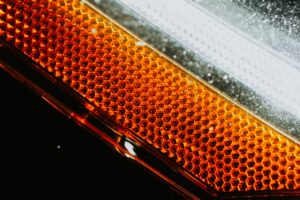27/06/2016
Plausibility is a concept that has become prominent in an increasing number of UK patent decisions. Plausibility now crops up in connection with novelty, inventive step, sufficiency, entitlement to priority and industrial applicability. Additionally, plausibility is particularly relevant to medical use patents, and with increasing numbers of these being litigated, the concept is ever more important.
Origins
The broad idea of plausibility first surfaced in 1992 in the EPO AgrEvo decision (T939/92). This decision did not explicitly refer to the term plausibility, but nevertheless the broad concept can be traced back to this decision. AgrEvo basically set out that when considering inventive step, it must be reasonably predictable, fairly assumed or credible that the technical problem was solved across the whole scope of the claim. In other words, it must be credible that a particular technical effect applies across the scope of the claim.
The first major EPO decision that coined the term plausibility was Johns Hopkins (T1329/04). The decision sets out that the application must make it at least plausible that its teaching solves the technical problem that it purports to solve. In other words, a technical effect relied on to demonstrate inventive step must be made plausible by the specification. The Johns Hopkins decision also indicates that the technical effect cannot be established for the first time by subsequently filed evidence.
Well established at the EPO, the question of plausibility has gradually crept into a number of UK decisions, and this only seems to be becoming more common. It has become relevant to industrial applicability, inventive step, sufficiency, priority and novelty.
Industrial applicability
In Human Genome Science v Eli Lilly and Company [2011] UKSC 51, plausibility arose when tackling the question of whether particular biological material had industrial applicability. Lord Neuberger set out that for a patent disclosing a new protein and its encoding gene, a plausible or reasonably credible claimed use or an educated guess of a use can suffice for demonstrating industrial applicability.
Inventive step
Conor Medsystems Inc v Angiotech Pharmaceuticals Inc [2008] RPC 8 is the leading UK decision which tackled plausibility in the context of inventive step. Lord Hoffmann effectively set out that obviousness should be considered as a two step process. Firstly, it should be determined whether the claimed invention is plausible and then whether the claimed invention is obvious according to the usual UK approach (e.g. Windsurfer/Pozzoli test).
The more recent decision in Generics [UK] Ltd (t/a Mylan) v Yeda Research And Development Co Ltd and Teva Pharmaceutical Industries Ltd [2013] EWCA Civ 925 set out that a technical effect which is not rendered plausible by the patent specification may not be taken into account for assessing inventive step. The decision also confirmed that later evidence may be used to support a technical effect made plausible by the specification and that a third party may rely on post filed evidence to challenge the existence of a technical effect made plausible by the specification.
Sufficiency
Sufficiency is an area of patent law where plausibility is, in my view, of particular relevance, not least because this also ties in with novelty and entitlement to priority.
In the UK, there are effectively two flavours of insufficiency: classical insufficiency and excess claim breadth insufficiency. Classical insufficiency describes the situation in which the claimed invention cannot be performed without undue burden. Excess claim breadth insufficiency relates to whether the specification is sufficient to allow the invention to be performed across the whole scope of the claim.
In the Regeneron Pharmaceuticals Inc and Bayer Pharma AG v Genentech Inc [2013] EWCA Civ 93, Kitchen LJ summarised that “the assertion that the invention will work across the scope of the claim must be plausible or credible. The products and methods within the claim are then tied together by a unifying characteristic or a common principle. If it is possible to make such a prediction then it cannot be said the claim is insufficient simply because the patentee has not demonstrated the invention works in every case.”
“On the other hand, if it is not possible to make such a prediction or if it is shown the prediction is wrong and the invention does not work with substantially all the products or methods falling within the scope of the claim then the scope of the monopoly will exceed the technical contribution the patentee has made to the art and the claim will be insufficient.”
For second medical use claims, attaining the claimed therapeutic effect (e.g. the treatment of cancer) is a functional technical feature of the claim. This means that when considering sufficiency and thus plausibility, the specification should make it plausible that a particular drug is effective for the treatment of the claimed condition.
In the recent and important case, Generics (UK) Ltd (t/a Mylan) v Warner-Lambert Company LLC [2015] EWHC 2548, a claim directed to Pregabilin for use in treating pain was found to be insufficient because there was no basis for concluding that it is plausible that Pregabilin would be effective for treating all types of pain. This decision seems to set a reasonably high plausibility bar that has perhaps not been followed in more recent cases. The question of how high this bar should be is discussed in more detail below.
Entitlement to priority
The relevance of plausibility to priority is directly related to the approach to sufficiency. In short, for a claim to be entitled to priority, the claimed subject matter in the priority document must be sufficiently disclosed. For example, in the case of a medical use, the priority document must include a disclosure making it plausible that a particular drug achieves the claimed therapeutic effect. This line of attack was recently used in Merck Sharp & Dohme v Ono Pharmaceutical [2015] EWHC 2973, which considered the patentability of a Swiss type claim directed to the treatment of cancer.
Novelty
Plausibility can, perhaps surprisingly, surface as being relevant to novelty. It is well established in the UK that to destroy novelty, a disclosure must be enabling, and whether a disclosure is enabling effectively boils down to whether that disclosure is sufficient. In Merck v Ono, the judge confirmed that “there is no distinct requirement for plausibility in the law of novelty, over and above disclosure and enablement”. That said, the judge indicated that “plausibility is an aspect of enablement”. For the prior art to be an enabling disclosure of a medical use claim, the prior art has to make the therapeutic effect plausible. In this particular case, the relevant prior art was not considered enabling because the document did not make it plausible that the particular agent would treat cancer.
How high should the threshold be?
As we have seen above, plausibility now makes its way into UK judgments in a number of different contexts. Patent proprietors may be starting to feel uneasy about the scope of this attack, which is not itself a ground of invalidity in the UK or before the EPO. Such fears may have been compounded by the decision in Warner Lambert, which seemed to indicate a relatively high standard for what is considered plausible.
However, some of the more recent decisions perhaps begin to lower the threshold for what is considered plausible and so rein in the scope of this attack.
In Merck v Ono, the judge stressed that it is necessary to consider plausibility in the context of the invention and the particular legal objection must be kept in mind. The judge held that the term “plausible” is not found in the relevant parts of the EPC or the UK Patents Act and there is no law of plausibility as such.
Merck v Ono dealt with a claim directed to the use of a particular antibody in treating cancer. Despite evidence indicating that the antibody in question was not successful in treating three types of cancer (colorectal cancer, prostate cancer and multiple myeloma), the judge considered that the patent application, read by a skilled person when it was filed, makes a reasonable prediction that the therapy will work to treat cancer. The judge concluded that claiming the use of the particular antibody to treat cancer is a fair level of generality. In short, the judge held that it was plausible that the treatment was likely to work for cancer in general.
Thus, this decision suggests that for a medical use claim to be plausible, it is possible that successful treatment does not need to occur for 100% of the diseases claimed, although this is likely to depend on the specific facts of a given case.
Actavis v Eli Lilly [2015] EWHC 329 was a case concerning a second medical use claim directed to the use of Tomoxetine to treat ADHD. Plausibility was raised by Actavis in connection with sufficiency and also inventive step. Actavis advanced an argument that the test for plausibility in the context of sufficiency is the same as the test for ‘reasonable expectation of success’ that can be used to assess obviousness as part of the obvious to try doctrine.
The judge held that plausibility is a factor that should be taken into account when assessing patentability, but does not form a separate ground of objection to validity. The judge set out that plausibility is a threshold test which is satisfied by a disclosure which is credible as opposed to speculative. This view was also confirmed in a recent case of Glaxosmithkline UK Ltd v Wyeth Holdings LLC [2016] EWHC 1045.
Actavis v Lilly also sets out that the reason why a court requires the invention of a patent to be plausible is to exclude speculative patents based on mere assertion where there is no real reason to suppose the assertion is true. The judge held that the standard for assessing plausibility is not the same standard for assessing the expectation of success in the context of obviousness.
Where next for plausibility?
With more and more second medical use patents now being litigated, I believe plausibility will remain a popular attack for alleging insufficiency or lack of inventive step. Recent decisions have perhaps started to rein in the extent to which plausibility can be used to attack patentability. That said, I understand that two pending appeals are due to be decided by the Court of Appeal this year, and both of these should provide further guidance on plausibility. Further developments are likely to follow, so watch this space.
This article is for general information only. Its content is not a statement of the law on any subject and does not constitute advice. Please contact Reddie & Grose LLP for advice before taking any action in reliance on it.


